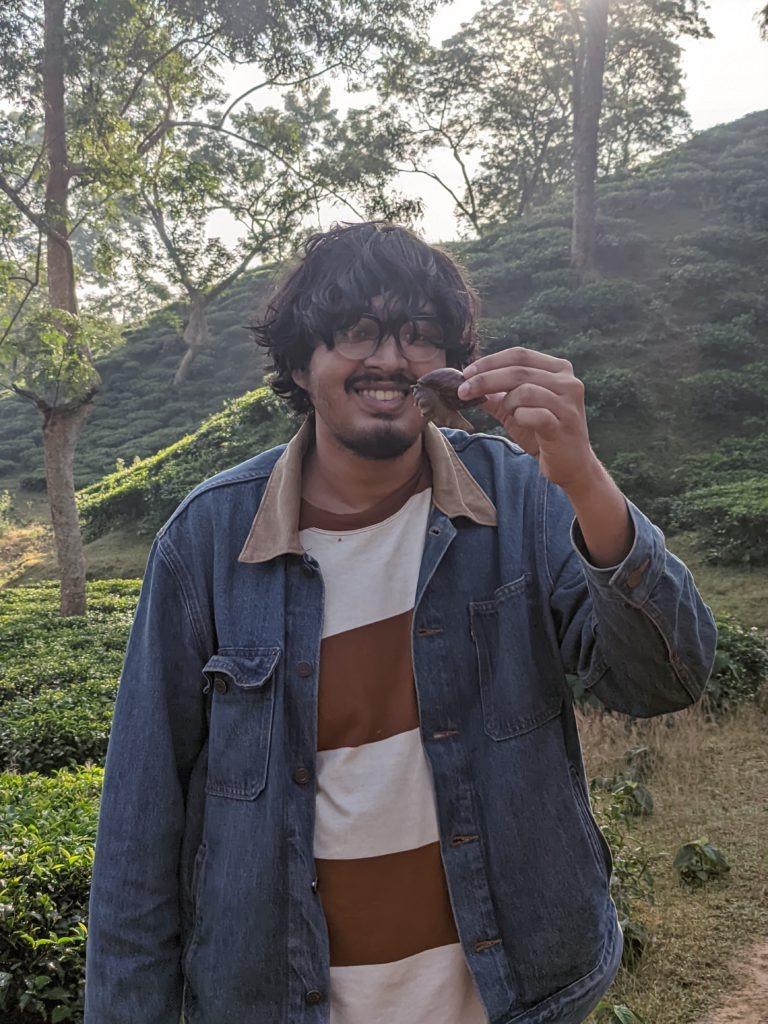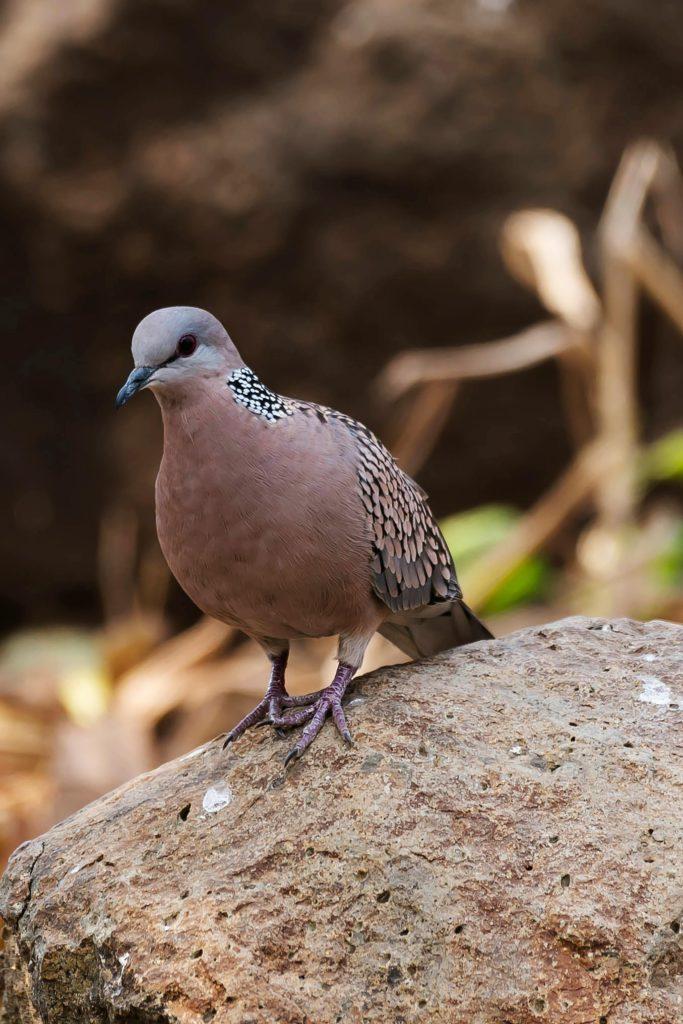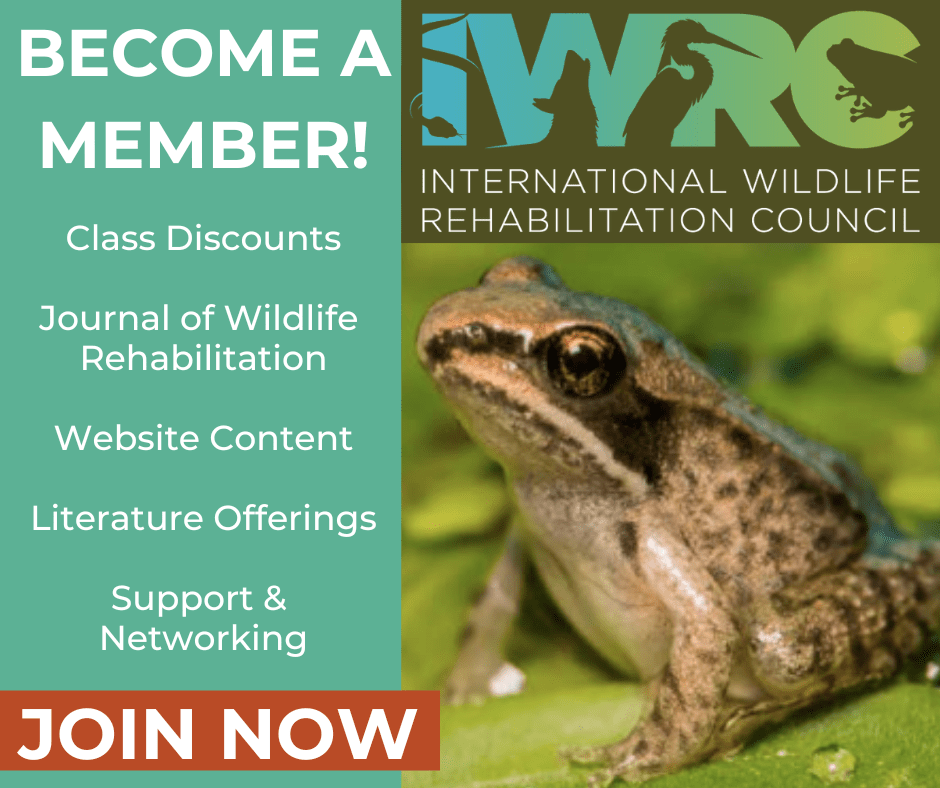Kalyan Goswami
Tell us a little about yourself:
Hello! I’m Kalyan Goswami from Bangladesh. I’m excited about my scholarship to pursue a DVM degree at the University of Veterinary & Animal Sciences in Lahore, Pakistan. Previously, I’ve been involved in wildlife rescue and conservation efforts, starting at home and later joining the Deep Ecology And Snake Conservation Foundation as an Executive Member and Rescue Volunteer. Besides that, I actively participate in various social, cultural, and environmental societies, where I enjoy contributing to meaningful initiatives and connecting with like-minded individuals.
What is your fondest wildlife rehabilitation memory?
My fondest wildlife rehabilitation memory is successfully rehabilitating and releasing an Oriental magpie-robin back into the wild. Witnessing the bird’s recovery and eventual return to its natural habitat filled me with a sense of fulfillment and joy, knowing that I had played a part in giving it a second chance at life in the wild.
What challenges have you faced in your wildlife rehabilitation work?
My fondest wildlife rehabilitation memory was when I successfully rehabilitated and released an Oriental magpie-robin into the wild. I was only 13 years old at the time, and it was my first experience with wildlife rehabilitation. Witnessing the bird fly off into its natural habitat, healthy and free, filled me with immense joy and a sense of accomplishment. It was a moment that solidified my passion for wildlife conservation and rehabilitation, setting me on a lifelong journey of working to protect and care for animals.
Has the IWRC aided in your journey as a wildlife rehabilitation? If so, can you explain how or give an example?
As a beginner in the field of wildlife rehabilitation, I have found invaluable support and guidance from the International Wildlife Rehabilitation Council (IWRC). Through their monthly webinars featuring experts in the field, I have been able to gain essential knowledge and insights into the proper techniques and requirements for successful wildlife rehabilitation. These webinars have provided me with practical tips, case studies, and access to a community of experienced professionals, which has significantly aided me in my journey toward becoming a wildlife rehabilitator. I am grateful for the resources and support offered by IWRC as I continue to learn and grow in this field.
Tell us about your experience as a wildlife professional:
As a wildlife professional, I’ve had the privilege of being actively engaged in wildlife rescue and conservation efforts. From rescuing injured animals to participating in habitat restoration projects, my experience has been both rewarding and enlightening. Working with organizations like the Deep Ecology And Snake Conservation Foundation has allowed me to develop hands-on skills in wildlife management and rehabilitation. Additionally, I’ve been involved in educational outreach programs to raise awareness about wildlife conservation among local communities. Overall, my journey as a wildlife professional has strengthened my passion for protecting and preserving our natural world.
What brought you into wildlife rehabilitation work?
What initially drew me into wildlife rehabilitation work was my deep-seated passion for animals and nature. Growing up surrounded by diverse wildlife, I developed a profound appreciation for the beauty and importance of our natural world. Witnessing firsthand the challenges faced by wildlife due to human activities ignited a desire within me to make a positive impact. I felt a strong sense of responsibility to help injured or orphaned animals and to contribute to their rehabilitation and eventual release back into their natural habitat. This desire to protect and care for wildlife led me to pursue opportunities in wildlife rehabilitation work, where I could channel my passion into meaningful action.
What wildlife species do you rehabilitate?
“I specialize in rehabilitating a variety of wildlife species, with a particular focus on native birds, foxes, snakes, squirrels, eagles, and other reptiles such as the Asian water monitor. Each species presents unique challenges and requirements for rehabilitation, and I am dedicated to providing tailored care and support to ensure their successful rehabilitation and eventual release back into their natural habitats.”
What common misconception about wildlife rehabilitation would you like to dispel?
One common misconception about wildlife rehabilitation is that it’s just about nursing injured animals back to health. In truth, it involves a lot more, like providing proper medical care, observing behavior, managing diet, and creating suitable habitats. It requires special knowledge, training, and permits, and it’s all about getting animals back into the wild safely and healthily while minimizing their stress and human interaction.
What local, national, or international policy would you like to see that would support wildlife rehabilitation?
I’d like to see policies that prioritize funding and resources for wildlife rehabilitation centers and programs. These policies could include grants for education and training, support for research on wildlife health and conservation, and incentives for collaboration between rehabilitation centers and government agencies. Additionally, I believe there should be regulations in place to protect wildlife habitats and reduce human-wildlife conflicts, which would ultimately help prevent injuries and increase the success of rehabilitation efforts.
What do you hope for the future of wildlife rehabilitation?
I hope for a future where wildlife rehabilitation efforts continue to grow and evolve, leading to healthier populations of wildlife and more effective conservation efforts. I also hope to see increased awareness and support for wildlife rehabilitation among communities and governments, leading to better policies and resources for protecting and rehabilitating wildlife populations. Ultimately, my goal is to contribute to the conservation of wildlife in Bangladesh and inspire others to join in these efforts.
What message would you like to share with other IWRC members and wildlife rehabilitators across the world?
My message to fellow IWRC members and wildlife rehabilitators worldwide is one of gratitude, solidarity, and encouragement. Together, we form a global community dedicated to the well-being of wildlife and the preservation of our natural world. Let’s continue to support and learn from each other, sharing our knowledge, experiences, and best practices to improve our efforts in wildlife rehabilitation. Despite the challenges we may face, let’s remain resilient and committed to our cause, knowing that every life we save and every species we protect makes a difference. Together, we can make a positive impact and create a brighter future for wildlife everywhere.
Are you passionate about wildlife conservation and rehabilitation? Consider becoming a member of the International Wildlife Rehabilitation Council (IWRC):
https://theiwrc.org/product-category/membership/
As a member of the IWRC, you’ll have access to a wealth of resources and support!




Leave a Reply
You must be logged in to post a comment.